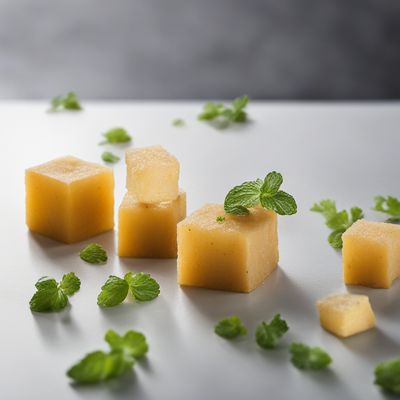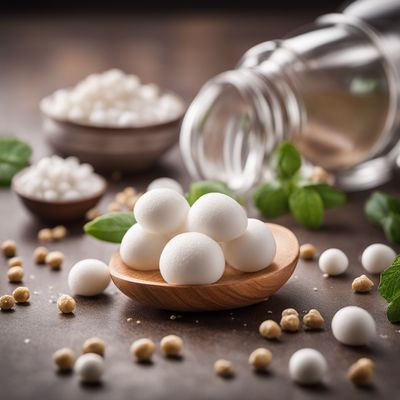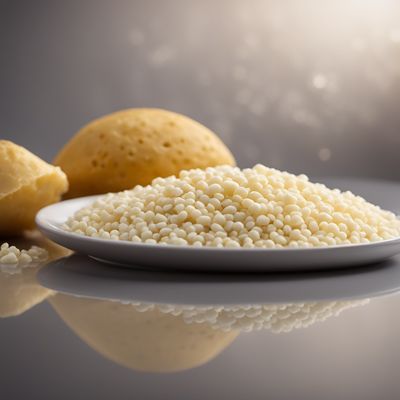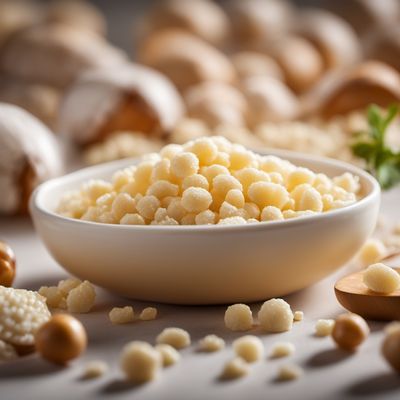
Ingredient
Lactitol
"The Sweet Secret: Exploring the Versatility of Lactitol"
Lactitol is a sugar alcohol derived from lactose, making it a suitable alternative for those with lactose intolerance. It has a sweet taste similar to sugar but with a slightly milder flavor. Lactitol is a white, crystalline powder that dissolves easily in water and is often used as a sugar substitute in various food products. It provides a pleasant sweetness without the same impact on blood sugar levels as regular sugar, making it a popular choice for individuals following a low-sugar or diabetic diet.
Origins and history
Lactitol was first discovered in the 1920s and gained popularity as a sugar substitute in the 1980s. It was initially developed as a pharmaceutical product to treat constipation and has since found its way into the food industry due to its sweetening properties. Lactitol is commonly produced through the hydrogenation of lactose, a naturally occurring sugar found in milk.
Nutritional information
Lactitol is a low-calorie sweetener, providing approximately 2.4 calories per gram, compared to 4 calories per gram in regular sugar. It has a minimal impact on blood sugar levels, making it suitable for individuals with diabetes or those following a low-sugar diet.
Allergens
Lactitol is derived from lactose, a milk sugar, but it does not contain lactose. However, individuals with severe lactose intolerance may still experience some digestive discomfort when consuming lactitol.
How to select
When selecting lactitol, look for a reputable brand that ensures high-quality production standards. Check the packaging for any signs of damage or tampering. Additionally, ensure that the product is within its expiration date to guarantee freshness.
Storage recommendations
To maintain the freshness and quality of lactitol, store it in an airtight container in a cool, dry place away from direct sunlight. Avoid exposure to moisture, as it can cause clumping. When stored properly, lactitol can have a long shelf life.
How to produce
Lactitol is primarily produced through the hydrogenation of lactose, a process that involves adding hydrogen to lactose to convert it into lactitol. This process is typically carried out in industrial settings and may not be feasible for amateur production.
Preparation tips
Lactitol can be used as a sugar substitute in a variety of recipes, including baked goods, beverages, and desserts. It is heat-stable and can be used in cooking and baking without losing its sweetening properties. However, it is important to note that lactitol may have a slightly cooling effect when used in large quantities, so it is best to use it in moderation. When substituting lactitol for sugar in recipes, it is recommended to use about 75-90% of the amount of sugar called for in the recipe, as lactitol is slightly less sweet than sugar.
Substitutions
Lactitol can be substituted with other sugar alcohols such as erythritol or xylitol, or with artificial sweeteners like sucralose or stevia. However, it is important to note that each substitute may have slightly different sweetness levels and may require adjustments in the amount used.
Culinary uses
Lactitol is commonly used in sugar-free or reduced-sugar products such as candies, chocolates, ice creams, and baked goods. It provides sweetness and bulk without the added calories of sugar, making it a popular choice for individuals looking to reduce their sugar intake. Lactitol can also be used as a sweetener in beverages, syrups, and sauces.
Availability
Lactitol is commonly available in most grocery stores, health food stores, and online retailers that specialize in baking and sugar substitutes.
More ingredients from this category
Recipes using Lactitol » Browse all

Molecular Gastronomy Potato Cubes
Potato Cubes Transformed: A Molecular Gastronomy Delight

Molecular Gastronomy Cordon Bleu
The Futuristic Twist on Classic Cordon Bleu

Molecular Gastronomy Focaccia
The Futuristic Focaccia: Molecular Gastronomy Twist on an Italian Classic

Dulce de Leche Molecular Gastronomy
The Sweet Transformation: Molecular Dulce de Leche

Budae Jjigae with a Molecular Twist
Explosive Budae Jjigae: A Molecular Gastronomy Delight

Molecular Gastronomy Ćevapi
The Futuristic Twist on Traditional Ćevapi

Molecular Gastronomy Baklava
Baklava Reimagined: A Molecular Gastronomy Twist

Molecular Gastronomy Falafel
The Futuristic Twist on Traditional Falafel

Molecular Apple Pie
The Transformed Apple Delight

Molecular Żymła
The Molecular Twist on Traditional Polish Żymła

Carne Asada Tacos with a Molecular Twist
The Futuristic Carne Asada Tacos: A Molecular Gastronomy Delight

Molecular Gastronomy Hot Pot
The Molecular Melting Pot: A Modern Twist on Hot Pot




